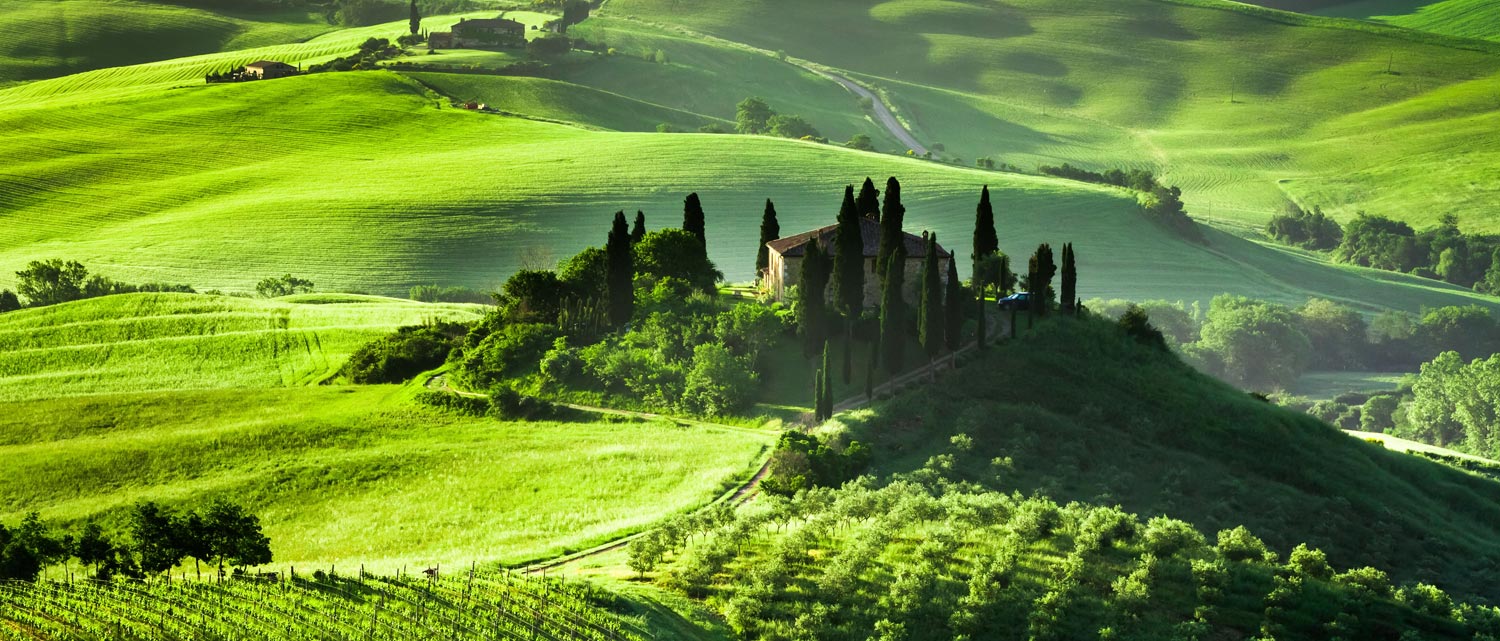
This magnificent region, covering 23,000 km2 in the centre of the country, is intrinsically linked with the Renaissance and boasts a roll-call of writers, poets and artists second to none. Its dialect became adopted as the national language and its stunning landscapes, both natural and human, are indelibly set in the global image bank. A drive through its hills and valleys brings gasps at every twist and turn.
Wine, wheat and olive oil form the bedrock of Tuscany’s agricultural economy. Throughout its turbulent history, the land has been dominated by the powerful: the church, the landed aristocracy and the merchants of Siena and Florence. Vast estates were created to serve those powerful interests, worked by peasant sharecroppers who had little incentive for quality.
The last 150 years have seen enormous change. The last Grand Duke was driven out in 1860, with the region annexed by Piedmont-Sardinia before the unification of Italy in 1861. The Tuscany that emerged at the end of the Second World War, however, was on its knees. While many of the estates had long since been broken up, the peasant mentality remained strong for those working the land and the opportunity for a quick fix through the widespread use of chemicals was understandably seized. Still, despite the beginnings of economic recovery, many of the sons and daughters had deserted the land. Investment in infrastructure lagged far behind the more prosperous and powerful north and Tuscany became rather cut off.
Whether in the coasts of the Maremma, the hills of Chianti or the ancient sweeping valleys of Montalcino and the Val d’Orcia, the viticultural revolution of the last 30-40 years has been staggering. Fashions have swung violently; rules have been written, challenged, revised and ignored again; traditions have been rediscovered, rejected and re-embraced. Very little has stood still.
Red wines dominate in Tuscany. Sangiovese (in all of its many forms) takes centre stage often, but not always, with a supporting cast that can include indigenous varieties such as Canaiolo and Colorino or international interlopers such as Cabernet Sauvignon and Merlot, depending on where you are. Major white grapes are Trebbiano, Vernaccia, Vermentino and Malvasia but it is no longer uncommon to find Chardonnay or Sauvignon Blanc either. Very little sparkling wine is made, although sweet wines are still a regional speciality, via a number of methods. Rosé is also on the rise here, as elsewhere.
That the Tuscan people have huge pride in their land, their heritage and their standing in the world is abundantly clear. Wine is a vital part of the Tuscan identity and the desire to stand tall among the top players in the world’s wine league table is evident. As a result, there has never been a better time than now to plunge in and revel in its riches.